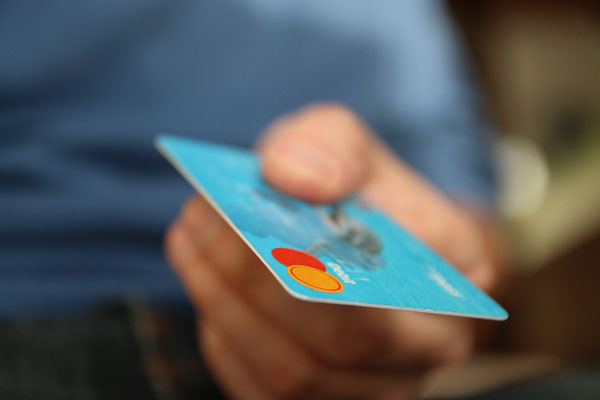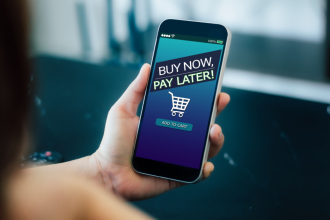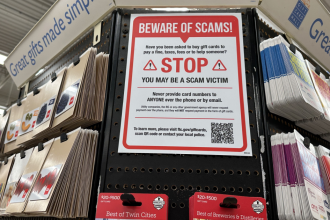Credit Sesame reveals how the minimum payment trap can lead to costly debt and signal deeper financial trouble.
New data from the Federal Reserve Bank of Philadelphia found that the percentage of credit card customers making just the minimum payments on their cards has reached a record high. This is a warning sign for those consumers and the economy in general.
Credit card companies like you to believe that as long as you make those monthly minimum payments, you’ve met your obligation as a credit card customer. However, making no more than the minimum payments on your credit cards is an expensive habit. Also, it can indicate financial trouble is coming.
Minimum payments now, maximum cost in the long run
According to the Philadelphia Fed, in the third quarter of 2024, 10.75% of credit card customers paid no more than the required monthly payment on their credit cards.
That’s the highest percentage recorded since the data series began in late 2012 and has risen sharply since early 2021.
So what’s the problem with that? As long as you keep up with your payments, you won’t incur late fees or have your late payments reported to the credit bureaus.
The problem is that “minimum payment” is a bit misleading. The word minimum applies to the amount you must pay on each credit card bill. However, paying just that amount maximizes the interest you have to pay in the long run.
A study by the Brookings Institute calculated an example of the cost of making just the minimum payment. Using a common formula for calculating those payments, Brookings found that with a $3,000 starting balance and an 18% interest rate, paying off that balance would take 11.5 years by making only the minimum payments.
Over that 11.5 years, you’d pay $3,154 in interest charges–more than your original balance. In other words, making just the minimum payments can more than double the cost of items you charge on your credit card.
If that sounds pretty bad, it can be even worse. Credit card interest rates have risen since Brookings did its study. The average rate is now 22.8%, according to the Federal Reserve. Also, this example assumes you don’t make any new charges on the card. If you do, those charges could easily exceed the minimum payment. As a result, your debt and interest charges would rise over time.
The flashing light on your financial dashboard
The cost of paying only the minimum due on your credit card bills is bad enough. The real danger is that it could be a warning indicator that things are about to get worse.
According to data from the Federal Reserve Bank of New York, the rise in consumers paying no more than the minimum on their credit card bills has coincided with rises in average credit card balances and delinquency rates.
If you consistently can’t afford to pay more than the minimum on your credit card bills, it’s a sign you’re close to the financial edge. If that minimum amount rises–which is likely to happen if your balance continues to rise–you may reach the point where you can no longer afford it.
At that point, the problem gets really serious. You will likely incur late fees, which add to your debt. Missed payments can damage your credit score so that you may see your interest rate rise. Plus, your access to further credit use may be restricted.
Paying no more than the minimum on their credit cards doesn’t just spell trouble for the consumers involved. It’s also a warning sign for the economy in general. When a growing percentage of consumers can’t pay more than those minimums, more and more people’s finances are becoming tapped out.
Avoiding the minimum payment trap
What can you do to avoid the minimum payment trap?
- Before your finances get too stretched, always try to make more than just the minimum payment on your credit card bills. A Credit Sesame survey found that over three-quarters of people with credit scores of 800 or higher pay off their credit cards in full every month. In contrast, under one-quarter of people with lower credit scores do this.
- If you have multiple credit cards, make any extra payments toward the one with the highest interest rate. This has the greatest impact on your future interest charges, giving your payments the most bang for your buck.
- If you consistently cannot afford to pay any more than the minimum, freeze your credit card use. That may sound drastic, but if you’re in that situation, you’re close to being unable to make the required payments. Better to cut off credit card use at a time of your choosing before you incur late charges and your credit use gets cut off anyway.
The minimum payment trap is more than just an expensive habit—it’s a sign that your finances may be shaky. While paying the minimum might feel manageable, the long-term costs can spiral out of control, leaving you with mounting debt and rising interest charges. Take action now by paying down your balances, reducing your reliance on credit cards, and avoiding the dangerous cycle of the minimum payment trap.
If you enjoyed The minimum payment trap: how it’s costing you more than you realize you may like,
Disclaimer: The article and information provided here are for informational purposes only and are not intended as a substitute for professional advice.
Read the full article here
















